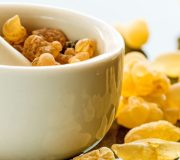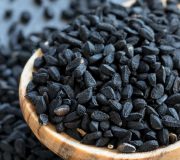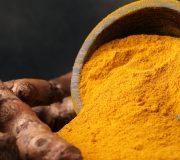The nervous, immune, and endocrine systems of the human body are intricately linked and interdependent – like a détente between three superpowers. This neuro-immume-endocroine network is protected and promoted by numerous elements of the diet. In terms of the interactions between these three metabolic systems, one need only recognize a select few:1
- Immune activity modulation by neurotransmitters such as acetylcholine, norepinephrine, vasoactive intestinal peptide, and histamine.
- Immune cytokine balance regulation by neuroendocrine hormones like corticotropin-releasing factor, leptin, and α-melanocyte stimulating hormone.
- Immune modulation of brain activity elements such as body temperature, sleep, and feeding behavior.
- The role of the major histocompatibility complex – not only directing T cells to immunogenic molecules held in its cleft, but also modulating neuronal connection development.
- Memory sharing between the nervous and immune systems.
Further examples illustrate how the nervous, immune, and endocrine systems interact:
- The immune system is compromised during depression.2
- Autonomic fibers originate in the brain, and innervate immune system organs like the spleen and thymus gland.3
- Brainstem neurons extend from the vagus nerve – releasing the neurotransmitter acetylcholine, which inhibits the cytokine release from immune cells.4
- Hypothalamic neurons monitor cytokines in circulation, together with neurons located in the walls of the cerebral ventricles.5-7
- Perceived threats trigger the release of cortisol from the adrenal cortex.8
- Released cortisol inhibits immune responses.8
- Thyroid hormones play a role in the development of the nervous system.8
The History of the “Triumvirate”
Historically, modern concepts of interrelationships between the three metabolic systems can be traced to the work of Walter Cannon. He reported in 1911 that the sympathetic division of the autonomic nervous system connects with the hormone, adrenaline, to mobilize an animal for the emergency “fight or flight” response. In turn, this response combines with the blood’s clotting capacity, as a demonstration of the body’s ability to mobilize its resources.9
This phenomenon was incorporated into the emerging field of psychoneuroimmunology, largely attributed to Hans Selye, whose experimentation with animals led to the framing of the General Adaptation Syndrome in 1936. Under adverse conditions, this Syndrome led to the enlargement of the adrenal gland and atrophy of the thymus, spleen, and other lymphoid tissue. Selye’s studies of the respective pro- and anti-inflammatory actions of glucocorticoids and mineralcorticoids cemented the role of endocrinology in the immune response.10
The narrative describing the relationship of nutrition to the triad of the nervous, immune, and endocrine systems begins with the fact that malnutrition is the most frequent cause of immunodeficiency worldwide. Sustained malnutrition then becomes a major risk factor for morbidity and mortality.12 Although most of the more than 800 million people who are considered to be undernourished come from the developing world, lack of nutrition extends to those in industrialized countries as well, particularly the elderly.13
Evidence in the Literature: Critical Nutrients
It is not difficult to point out that the intake of a proper balance of nutrients for maintaining optimal energy metabolism and building materials extends to neurotransmitters, neuroplasticity, and integrity of the neuron itself. Studies of animal and human behavior and cognition have added to the clinical domain of evidence in support of the neuroprotective role of nutrition, while advances in cell and molecular biology have contributed greatly to conceptualizing the constructive roles of proper nutrition in promoting neural structure and function.
There are specific examples of critical nutrients supporting the neuro-immuno-endocrine triad:
- N-3 polyunsaturated fatty acids (3-PUFA, also known as omega-3 fatty acids) are distributed to nearly every cell in the body and impact membrane composition, cell signaling, and regulation of gene expression. Docosahexaenoic acid (DHA) is the most abundant omega-3 fatty acid in the brain, facilitating membrane activation of phosphatidylinositol 3-kinase (Akt) signaling. This signaling increases the level of phosphatidyl serine, the major phospholipid in cell membranes.14 Omega-3 fatty acids promote neuroplasticity by maintaining membrane fluidity in addition to catalyzing reactions that have been shown to hyperpolarize the plasma membrane, thus facilitating neurotransmission.15
- Vitamin A supports the normal functioning of numerous types of immune cells that play key roles in the innate response, including natural killer cells, macrophages, neutrophils, and immune cells supporting the adaptive response, such as T and B lymphocytes. Vitamin A is needed for generating the antibody response to specific antigens.16
- Vitamin C consumes reactive oxygen species, which are generated by immune cells in their killing of pathogens and threaten the integrity of the nervous and endocrine systems. In addition, vitamin C stimulates the production and function of white blood cells, particularly neutrophils, lymphocytes, and phagocytes.17-18
- Folate’s prevention of neural tube defects in the newborn is likely the best-known function of this nutrient. As a coenzyme which mediates the transfer of one-carbon units, folate participates in multiple reactions critical to the endogenous synthesis and metabolism of DNA, RNA, and amino acids.20-21 These two actions clearly position folate as significant for nervous, endocrine, and immune integrity.
- Coenzyme Q10 is known for its ubiquitous presence, and it is involved in every process that requires energy, including enzyme synthesis, hormone action, and the synthesis and reuptake of neurotransmitters.22-23 Its mode of action is to act as an electron donor and acceptor. Numerous trials have shown that the administration of idebenone, a derive of coenzyme Q10, produced improvements in memory, attention, orientation, and cognitive assessment scores in Alzheimer’s patients.24-25
- Astragalus interacts with the immune system in a variety of ways, including (i) displaying mitogenic effects on mouse splenocytes and to a human T cell depleted population, (ii) elevating the interleukin-2 receptor expression in terms of immunorestorative activity, (iii) restoring the lymphocyte blastogenic response of older mice to levels more typical of younger species, and (iv) partially restoring the depressed immune functions in tumor- bearing animals.26
- Probiotics have been shown to support both adaptive and innate immune responses via (i) strengthening the gut epithelial barrier to prevent leakage of unwanted antigens into the bloodstream, (ii) stimulating the production of antibodies and T lymphocytes, (iii) altering cell signaling pathways that control the expression of cytokines and other proteins, and (iv) blocking pathogenic bacterial effects disruptive to host homeostasis by producing antibacterial substances, and competing with pathogens for epithelial cell binding.19-20,27-29
It has become apparent from these investigations, and hundreds of others, that the neuro-immuno-endocrine network is accepted as the bedrock of homeostasis, the integrity of which is highly dependent upon the presence of the proper nutritional ingredients.


















